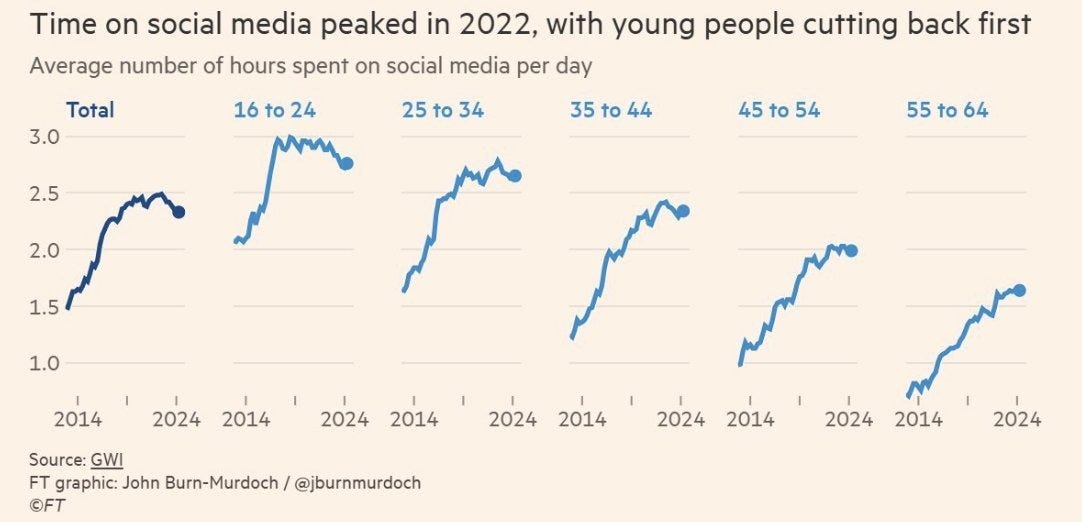Two growth tactics that'll define B2B in 2026
The days of pumping six figures into Meta campaigns and seeing 200% ROI are gone. That wasn’t too long ago (~2018), but the entire GTM playbook is being rewritten.
COVID-19, the rise of AI, short-form video, and social fatigue (especially among Gen Z) have created a perfect storm for change.
If it’s not paid acquisition, blog content, or company social pages, then what’s next for building a high-performing growth engine?
Connection at the core
Across every century, one thing has stayed constant: people crave connection. Ironically, that sense of connection faded with platforms like Myspace and Facebook. Instead of bringing people together, they fueled loneliness through endless scrolling and dopamine hits.
Fast forward to 2025 with AI accelerating automation, and human connection has declined even more.
People now want real interaction. Just look at the data:

Younger generations show the steepest decline.
For startups, this trend signals a clear direction for the next decade: invest in meaningful IRL experiences and community. Nike’s Run Club is a great case study. It began in the 2000s with local running events and evolved into a global community, adding social layers like leaderboards and challenges along the way.

But you don’t need to build a national community from day one. Start small.
Here’s how we’re doing it at GrowthPair:
- Curated group chat on topics our ICP cares about (like AI usage)
- Regular pickleball events in Santa Monica
- Founder-led content that keeps our brand human
It takes about 30 minutes a week to moderate a WhatsApp group with ~300 marketers and host a weekly pickleball game. The effort is minimal, and few companies are doing it, so it stands out.
Branding will take the lead
Building a B2B startup is easier than ever with tools like ChatGPT, Cursor, Replit, and Lovable. As the barrier to entry lowers, differentiation will come down to brand.
Many predicted that copywriters (myself included) would lose relevance because of AI. The opposite is happening. The best writers (those with taste) will be in high demand. They know how to make a brand feel different, not just sound different.
A strong brand isn’t just a polished website. It’s a consistent narrative that carries through emails, decks, and every touchpoint.
This moment mirrors the early App Store era in 2008. Back then, any novelty app could reach the top charts. Once the market matured, thoughtful design and storytelling became essential. B2B is heading in the same direction.
Notable mentions
A few other growth tactics worth attention:
- Answer Engine Optimization
- Employee-led content
- Podcasts & video
- Attending industry happy hours
- Attending industry conferences
All share a common theme: putting people at the face of your brand. In 2026, B2B buyers won’t want to buy from logos– they’ll want to buy from faces.
Attribution gets messier
Even as channels evolve, the fundamentals stay the same.
It’ll be harder to measure the ROI of community events or a brand refresh. But a full-funnel approach still works:
It’ll become increasingly tougher to measure conversions from community events, or the impact of a fresh rebrand.
My suggestion is to continue a full-funnel approach starting with top of funnel (valuable content), middle of funnel (events and community) and down funnel (retargeting). The core approach of moving potential customers through your funnel doesn’t change.
Instead of obsessing over attribution, shift resources based on where you need leverage:
- Need more leads → focus on top of funnel
- Weak activation → invest in community and engagement
- Low conversion → optimize retargeting
Attribution models like HDYHAU surveys still help, but they’ll never be perfect.
The companies that lean into community + brand will build the edge that closes deals faster and more often than their competition.
%20(150%20%C3%97%2040%20px).svg)